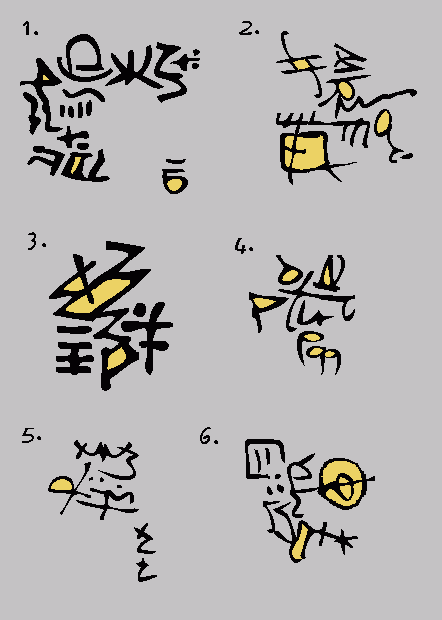Through a period of trial and error, I discovered that Tsitao-utna prefers a Turquoise drawing pencil with a soft dark lead, 6B. With this sort of pencil, she seems to converse longer and more naturally, with less distraction. She often seems hurried when she speaks and I believe I can perceive a certain tension in her voice. I think she is intimidated by Ga-ukogomen. Sometimes when she speaks to me, I imagine her looking over her shoulder, afraid she will see the na-awult. I imagine her as a young woman, with long dark hair, very straight and waist-length. I have no real reason to picture her this way, but that is the image her voice sounds like.
One day, a few hours after she had spoken to me, I picked up her pencil and began to doodle. The marks I drew are represented below in figure 1. This has happened to me many times since. I don't know what they mean, just as I don't know what the ecteiroglyphs mean, but I have ideas. I think the first doodle represents Tsitao-utna in some way. I believe figure 3 is a representation of Ga-ukogomen and figure 4 is about Nihr Avna-attu. I don't know if these doodles are their names in written form, or if these figures tell a part of their stories, like a lineage or a history. I have to conclude that these forms are for the future to decipher and are not for me to know. I am just the stenographer.

The forms that are closed are filled with yellow color because I feel it is somehow important to emphasize that those forms are closed. The forms that are unclosed, that have gaps between the lines, have a different significance than the closed forms.